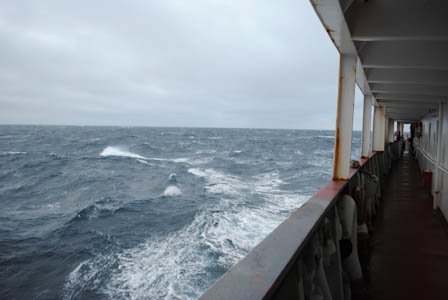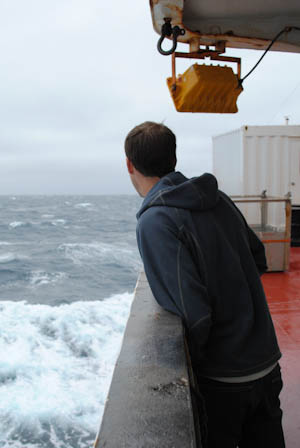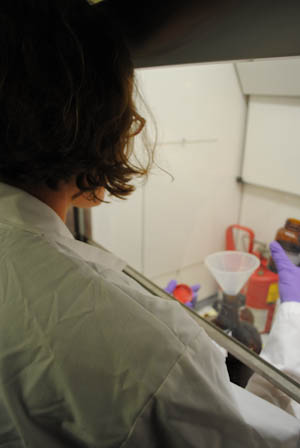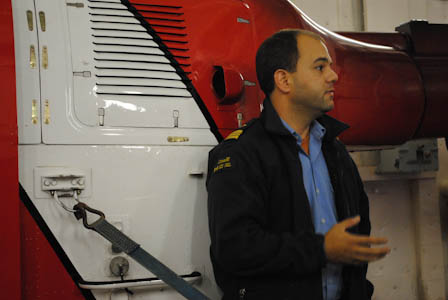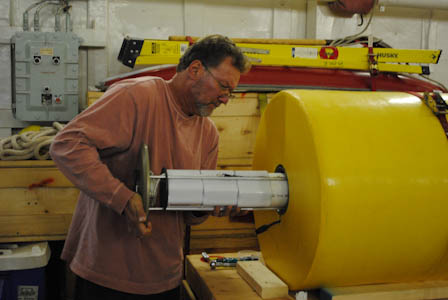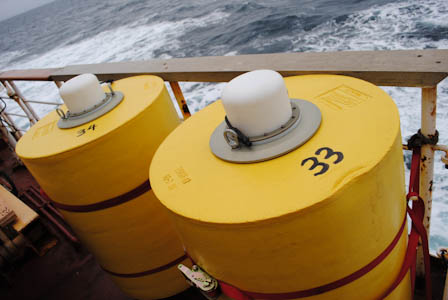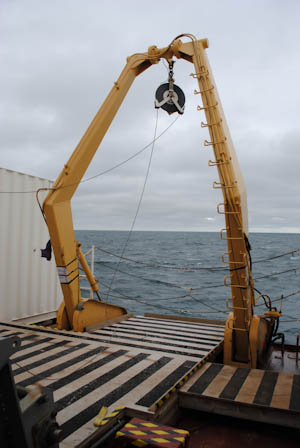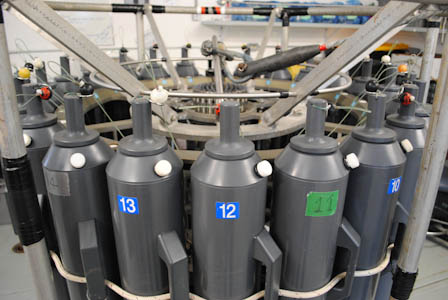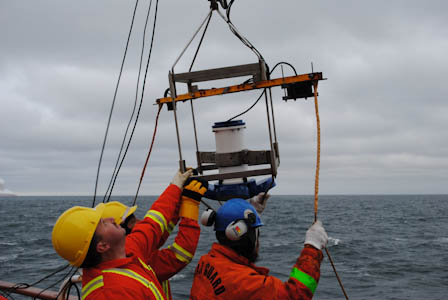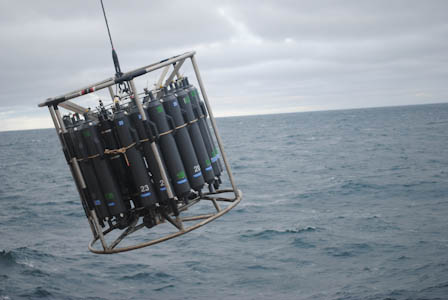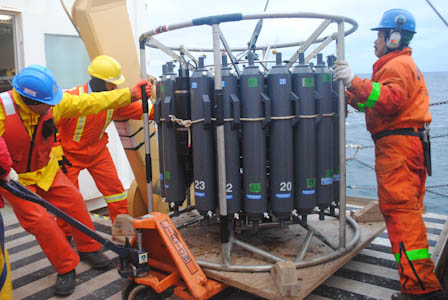Alex KainSeptember 19, 2009Inclement weather and 6-foot swells foiled this morning's plan to deploy a Conductivity, Temperature, and Depth monitor (CTD) and plankton nets. The weather rendered the deck too dangerous for a deployment and presented too high a risk of damaging equipment. Captain McNeill and Chief Scientist Sarah Zimmerman decided to wait for better conditions, as the first CTD deployment is always a learning experience for those who have never before deployed the instrument.
The weather also changed the conditions of daily life aboard the ship. It's become a rocky ride. Since late last night, the ship has been rolling from back to front and side to side, causing our first case of seasickness. The ship's pendular movement can be attributed to the external forces of the weather, but also to its architecture. As the Louis moves forward through ice-covered seas, its football-shaped hull slides the ship atop sea ice. The ship's mass then crushes the ice to allow for transit, rather than cutting directly through it. Although the design optimizes the ship's ability to move through polar environments, it makes for wobbly sea travel. Imagine a rugby ball in a bathtub with ice cubes coating the surface. The rugby ball will efxfectively push aside all the ice cubes it encounters, but when an external force like wind or waves interrupts its path, the ball will wobble, rotate, and dip from front to back. Now imagine that rugby ball filled with ant scientists and sailors. Imagine how the movement disrupts their daily ant life and ant walking. We are those ants. While waiting for the weather to calm, scientists continued to prepare for future deployments, recoveries, and sample collections. Individuals who will be leaving the ship via helicopter to perform field work met with the Louis's helicopter pilot for a safety briefing. Fun fact about the chopper: its antenna transmits a signal so forceful that it can burn human skin.
After waiting for weather to calm, we deployed instruments a few miles west of our intended site in the Amundsen Gulf, AG-5. Though not exact, the new site will still provide data that will help researchers understand Arctic waters.
Crew members and scientists relaxed at night by discussing the next day's deployments and watching the Texas-Texas Tech football game, presumably the first Longhorns football game ever watched in the Beaufort Sea, yet one of the many firsts to be expected on this expedition. All text and photos property of Alex Kain. Last updated: October 7, 2019 | |||||||||||||||||||||||||||||||||||||||||||||||
Copyright ©2007 Woods Hole Oceanographic Institution, All Rights Reserved, Privacy Policy. | |||||||||||||||||||||||||||||||||||||||||||||||


